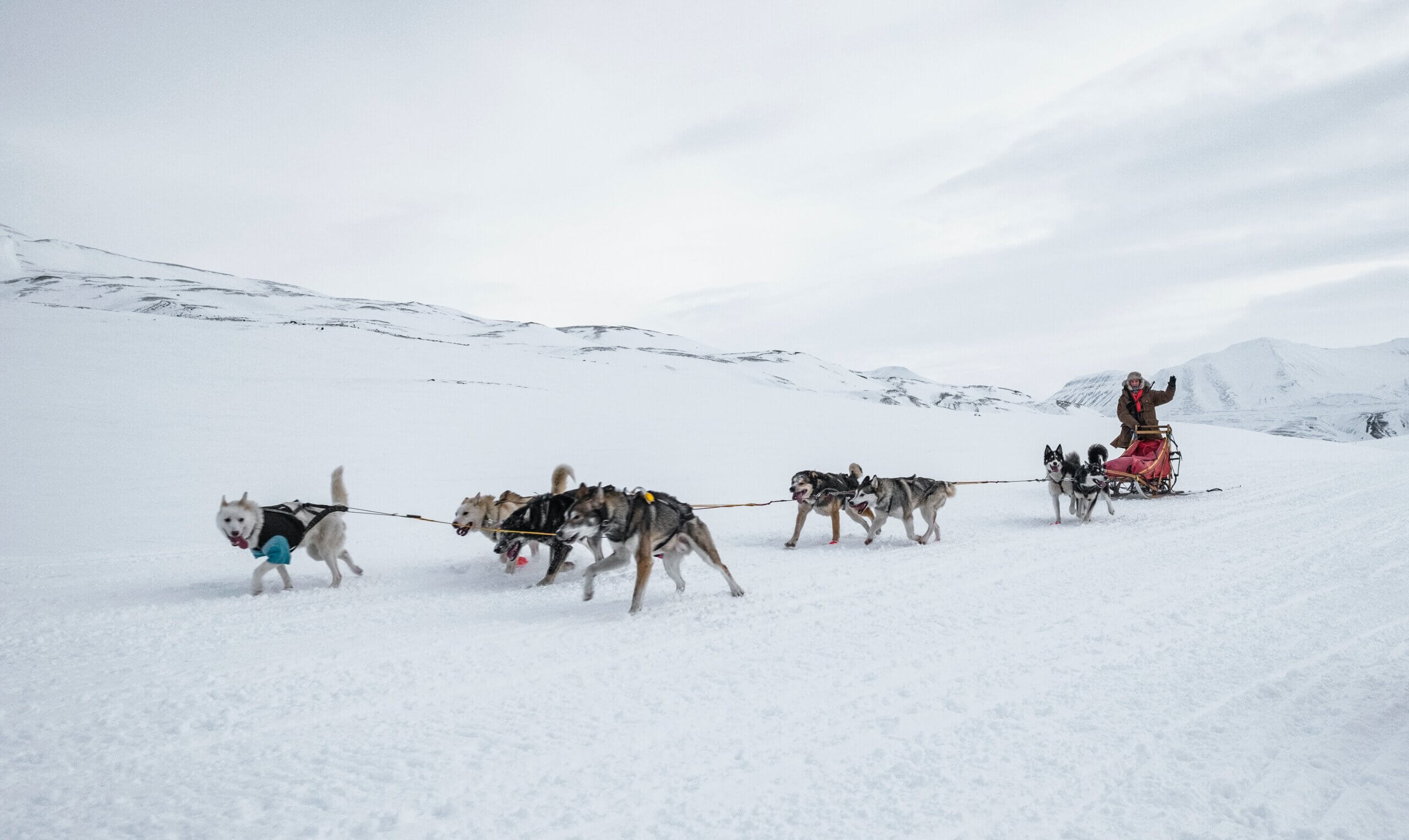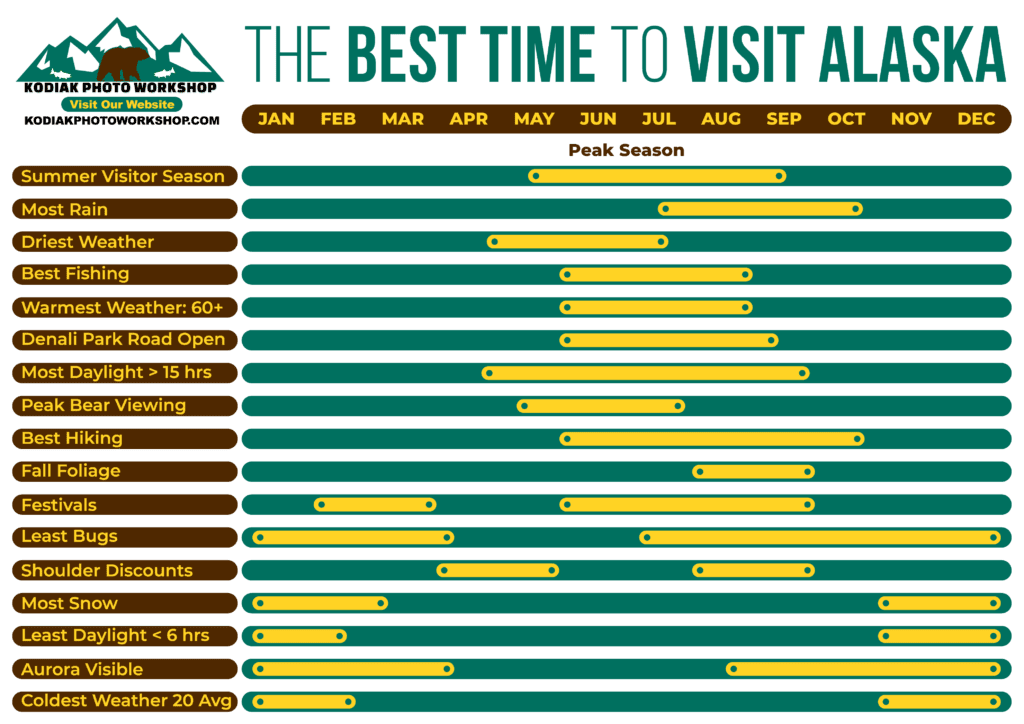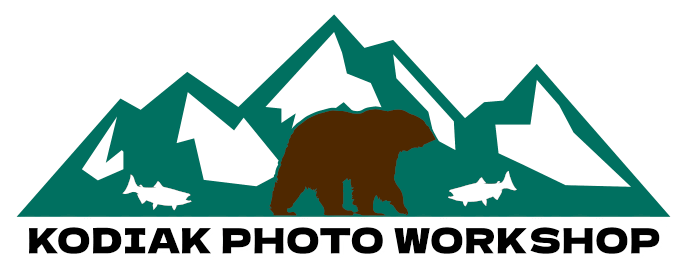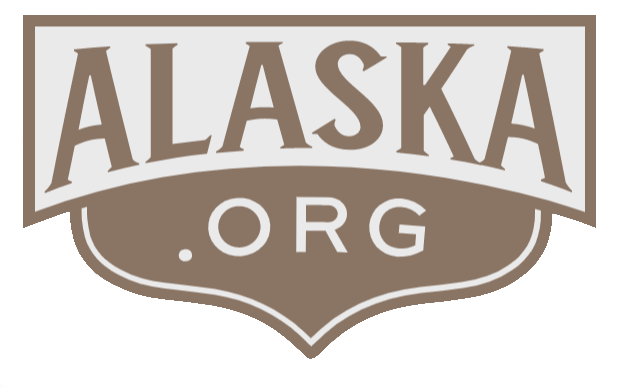Alaska, known as the Last Frontier, is a treasure trove of mesmerizing landscapes and awe-inspiring wildlife. From grizzly bears fishing for salmon in National Parks and on Kodiak Island to breaching humpback whales, the state of Alaska offers unparalleled opportunities to observe nature’s grandeur and all the landscape your eyes can see.
Planning a wildlife adventure in Alaska requires careful consideration of the best times to visit.
In this blog post, we will explore the optimal seasons and key factors that contribute to unforgettable encounters with Alaska’s magnificent wildlife.
Summer: Abundant Wildlife and Extended Daylight
Alaska’s summer, from May to September, is undoubtedly the prime season for wildlife enthusiasts. The extended daylight hours provide ample time to explore and observe the state’s diverse fauna. This is a period of extraordinary activity as animals prepare for winter, mate, raise their young, and hunt for food. There are many great locations to spot large and small manuals and marine life.
Key highlights include:
a. Grizzly Bears and Salmon Runs:
Katmai National Park, Kodiak Island, Brooks Falls, and McNeil River are famous for the remarkable spectacle of grizzly bears fishing for salmon. The peak of this captivating event typically occurs between late June and July, when the salmon runs are at their height.
b. Whales and Marine Life:
The nutrient-rich waters surrounding Alaska attract an abundance of marine life. From May to September, humpback whales, orcas, sea lions, seals, and numerous seabird species can be spotted in locations like the Inside Passage, Glacier Bay National Park, and Kenai Fjords National Park. You can also catch a boat from Seward to head out for whale spotting.
c. Birdwatching Extravaganza:
Alaska is a haven for birdwatchers, hosting millions of migratory birds. The summer months offer an opportunity to witness vast colonies of seabirds, including puffins, guillemots, and kittiwakes, nesting on coastal cliffs and islands.

Fall: A Season of Transition and Vibrant Colors
Autumn in Alaska, from late August to October, presents a unique blend of changing landscapes and wildlife activity. During this season, various species prepare for the approaching winter, showcasing remarkable behavior and stunning displays:
a. Brown Bears and Salmon Spawning: As the summer salmon runs come to an end, brown bears gather along rivers and streams, eagerly feasting on the remaining salmon. Locations like Kodiak Island, Denali National Park, and the Katmai coast offer remarkable opportunities to observe these magnificent creatures in action.
b. Moose Rutting Season: The fall marks the moose rutting season, during which bull moose engage in dramatic battles for dominance. Denali National Park and the Chugach Mountains are excellent places to witness these captivating displays of strength and dominance.
c. Fall Migrations: Alaska serves as a crucial stopover for numerous migratory birds on their southward journey. Sandhill cranes, snow geese, and various waterfowl species gather in vast numbers in locations such as the Copper River Delta and the Arctic National Wildlife Refuge.

Winter: A Wonderland of Arctic Wonders
While Alaska’s winters are harsh, they offer unique opportunities to witness captivating wildlife in stunning snowy landscapes. There is wildlife to spot too throughout the state. The key highlights of Alaska’s winter wildlife experience include:
a. Northern Lights and Arctic Foxes: The ethereal dance of the Northern Lights, or Aurora Borealis, can be witnessed in clear winter skies. Additionally, the Arctic fox, known for its beautiful white coat, is more visible against the snow-covered terrain.
b. Marine Wildlife Encounters: Despite the cold temperatures, the waters surrounding Alaska remain teeming with life. Coastal areas provide excellent opportunities to spot seals, sea otters, and bald eagles, which gather near ice floes to feed.
c. Iditarod and Sled Dogs: The world-famous Iditarod Trail Sled Dog Race takes place in early March, attracting mushers and their teams of sled dogs. This iconic event showcases the enduring spirit of Alaskan huskies and their bond with mushers.

Conclusion
Alaska’s wildlife experiences are unrivaled, offering remarkable opportunities to witness nature’s wonders. Whether you plan your visit in the summer, fall, or winter, each season brings unique wildlife encounters and memorable moments.
By understanding the best times to see wildlife in Alaska, you can make the most of your journey and create lasting memories of this remarkable wilderness.
So, pack your binoculars, ready your camera, and embark on an unforgettable adventure in the Last Frontier!












